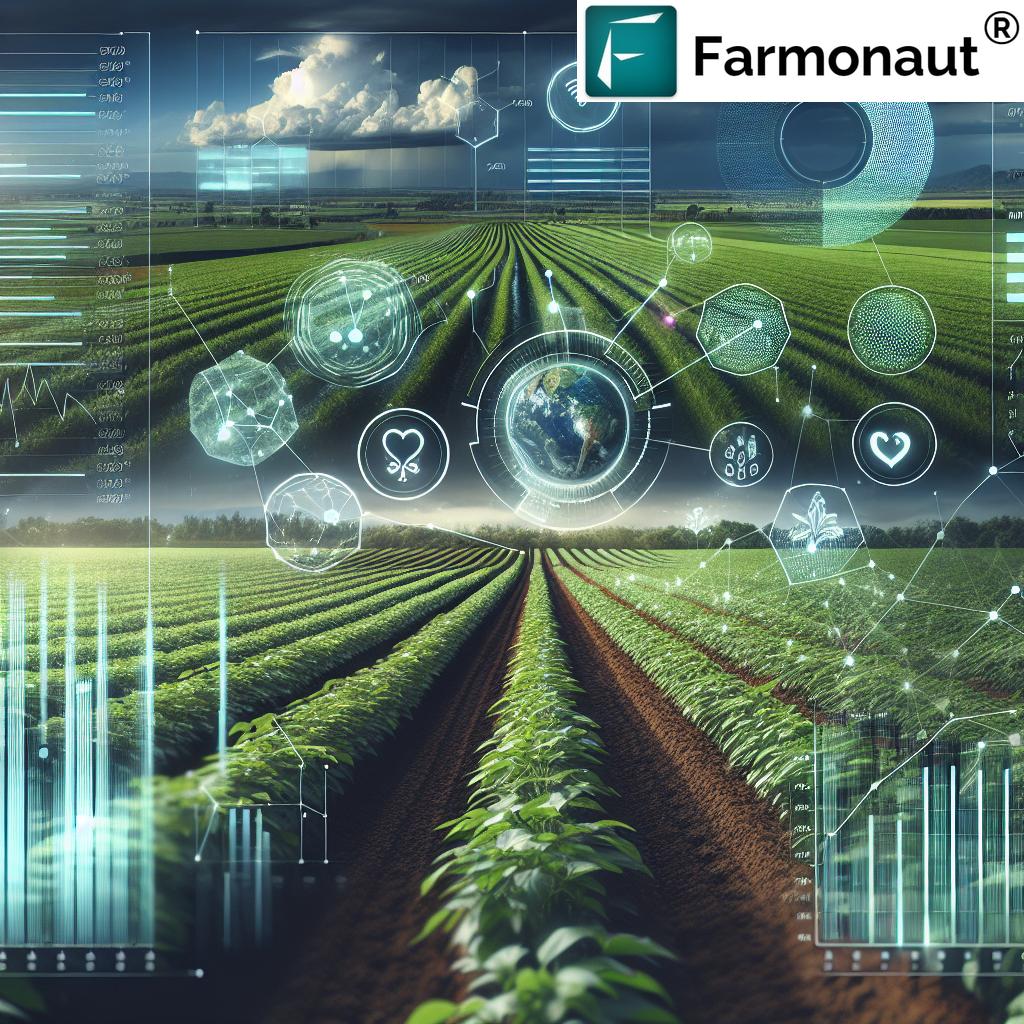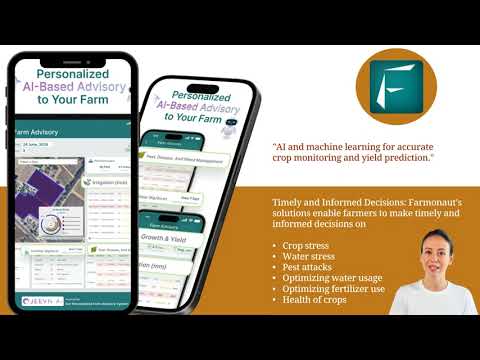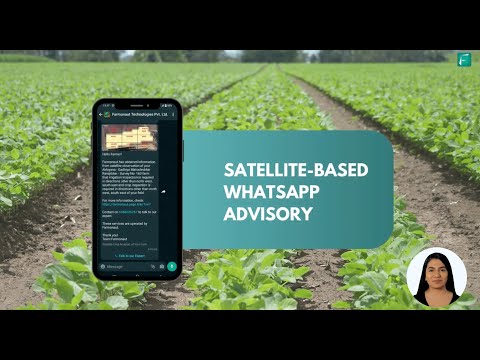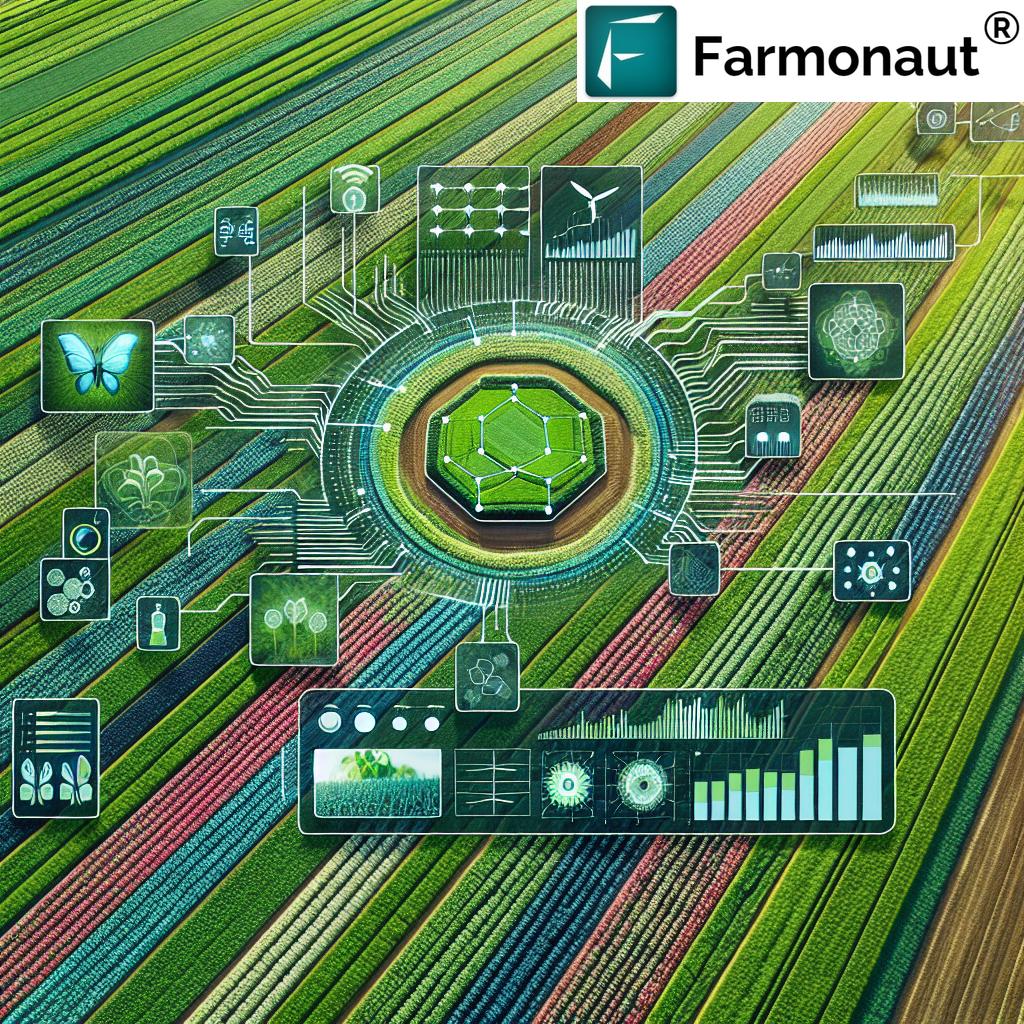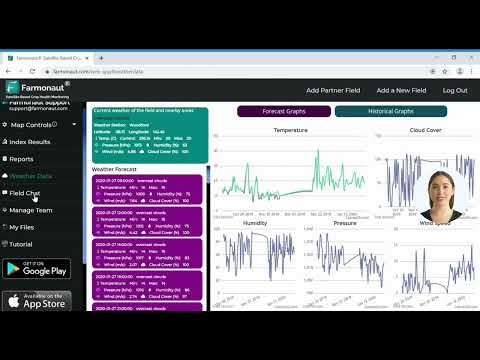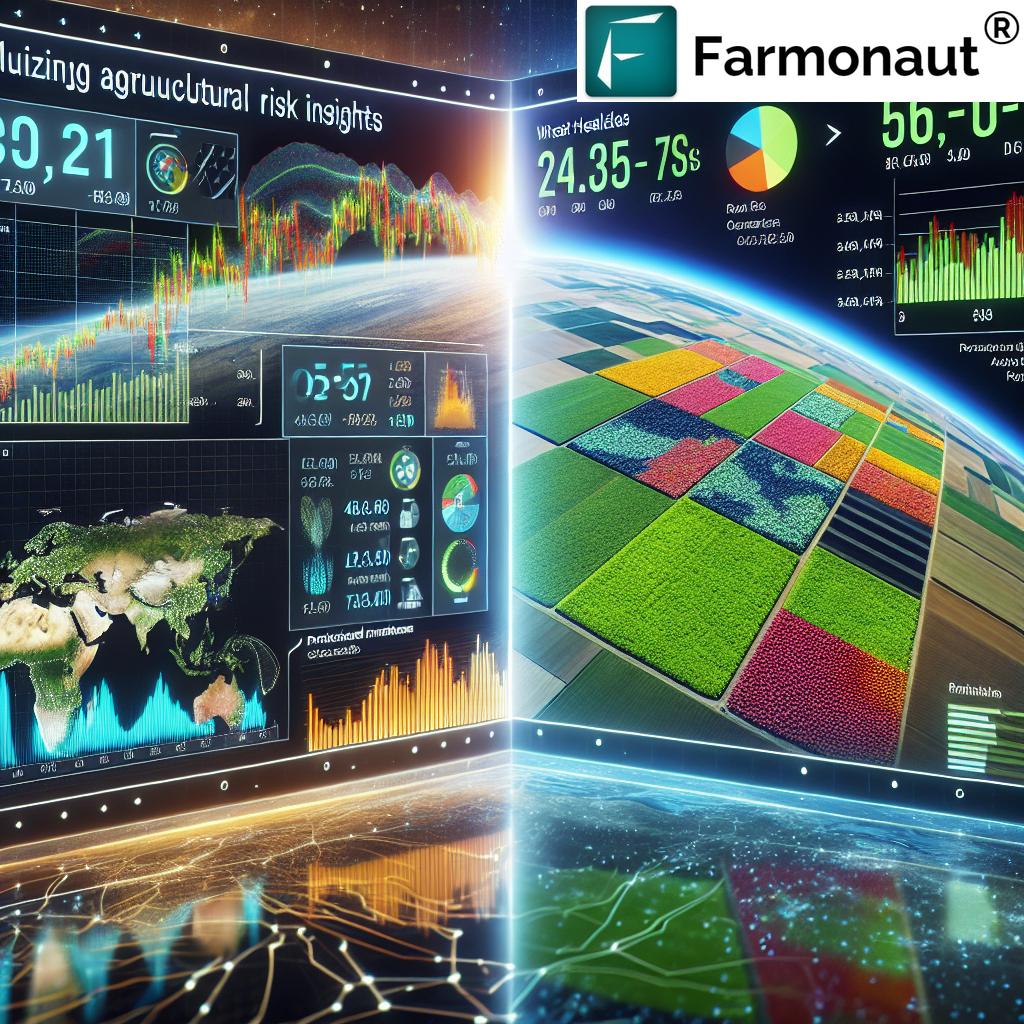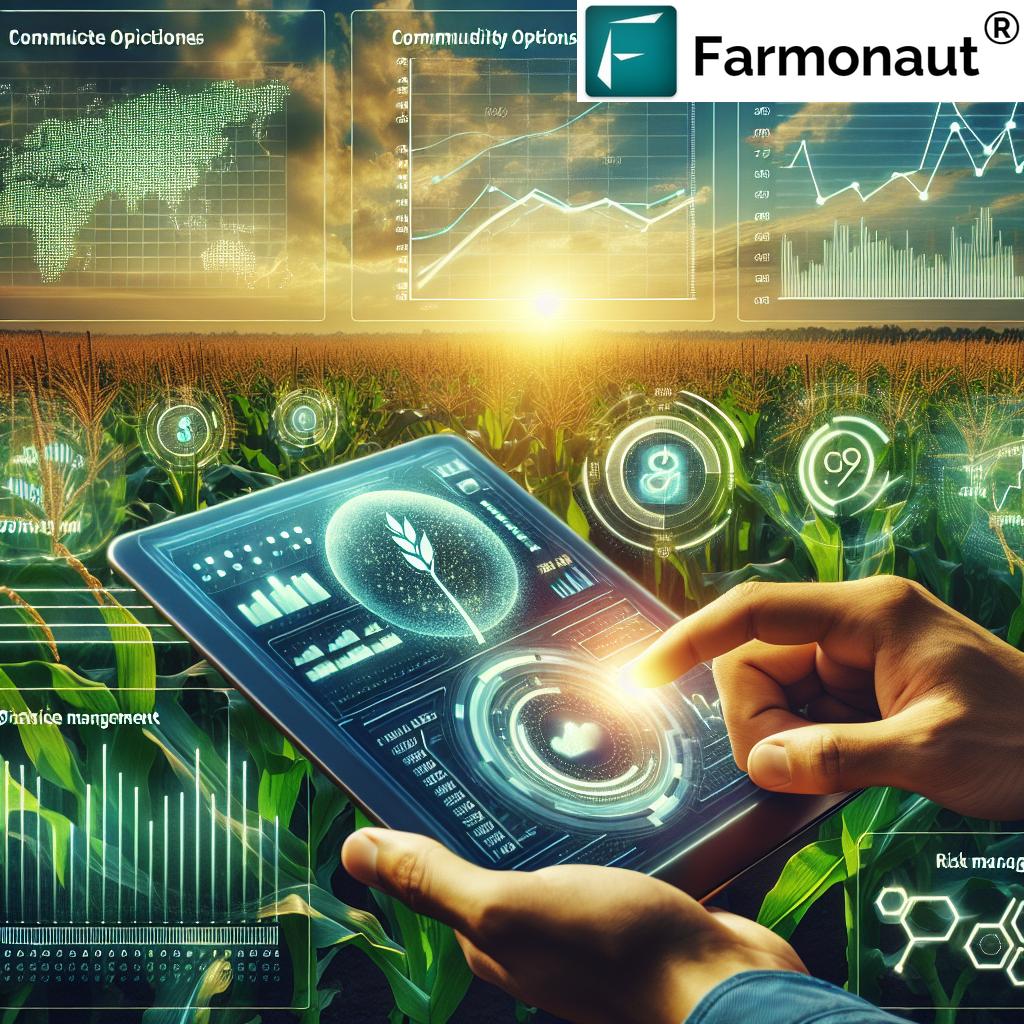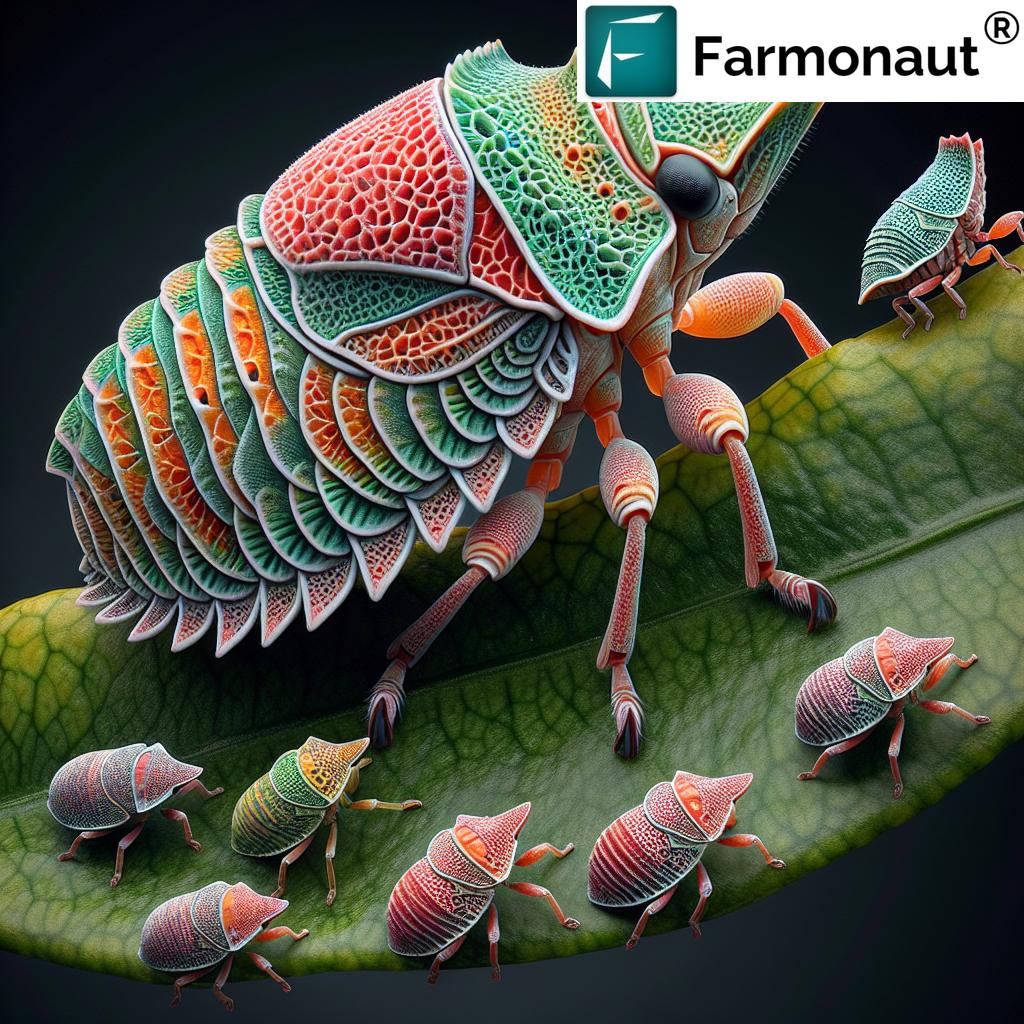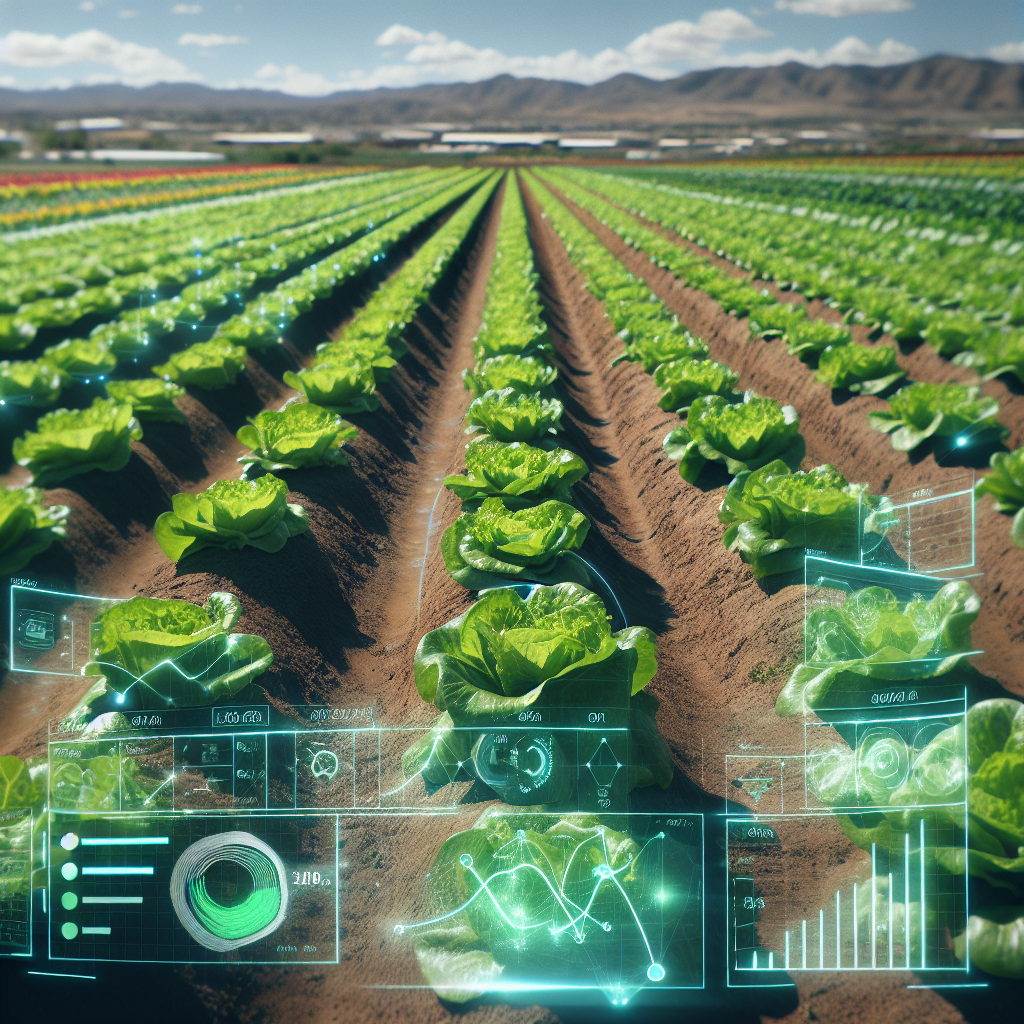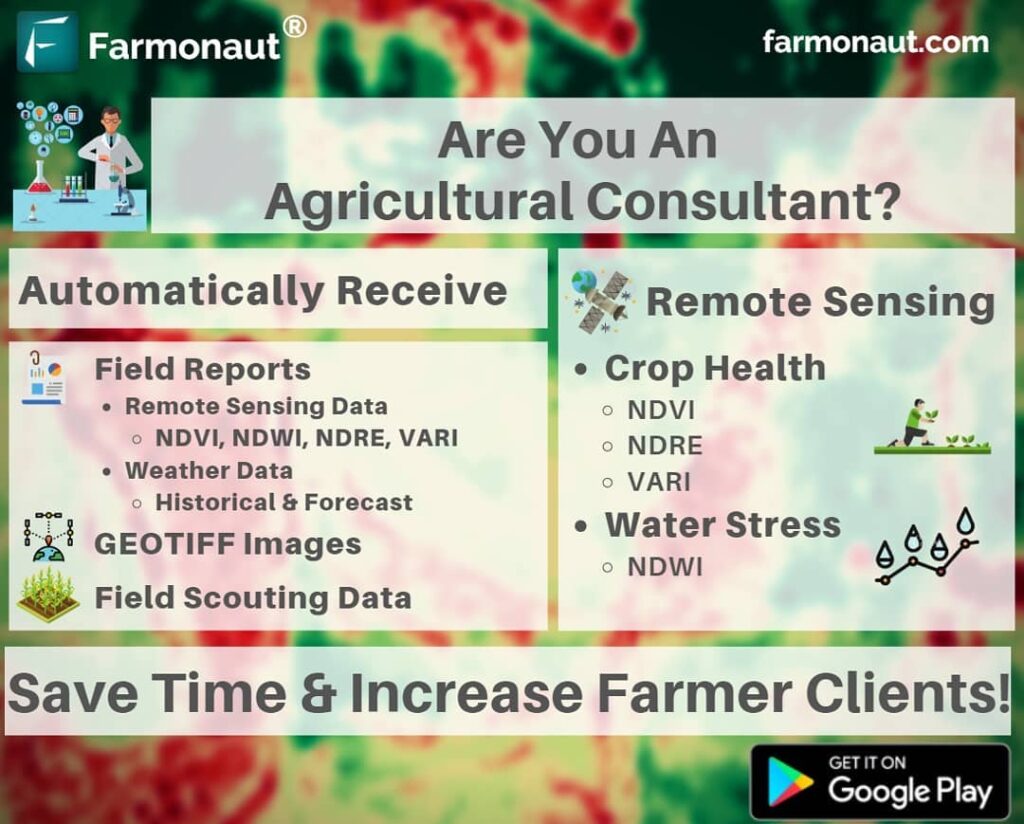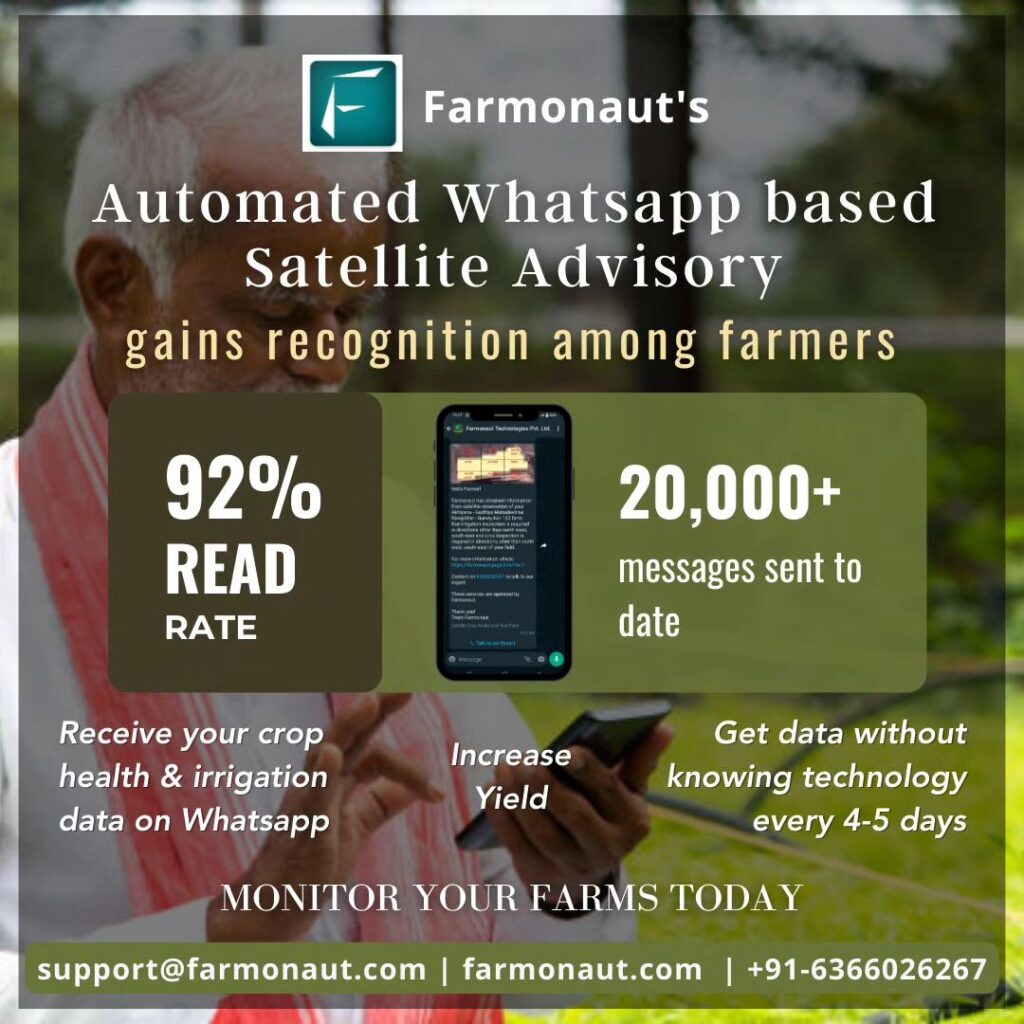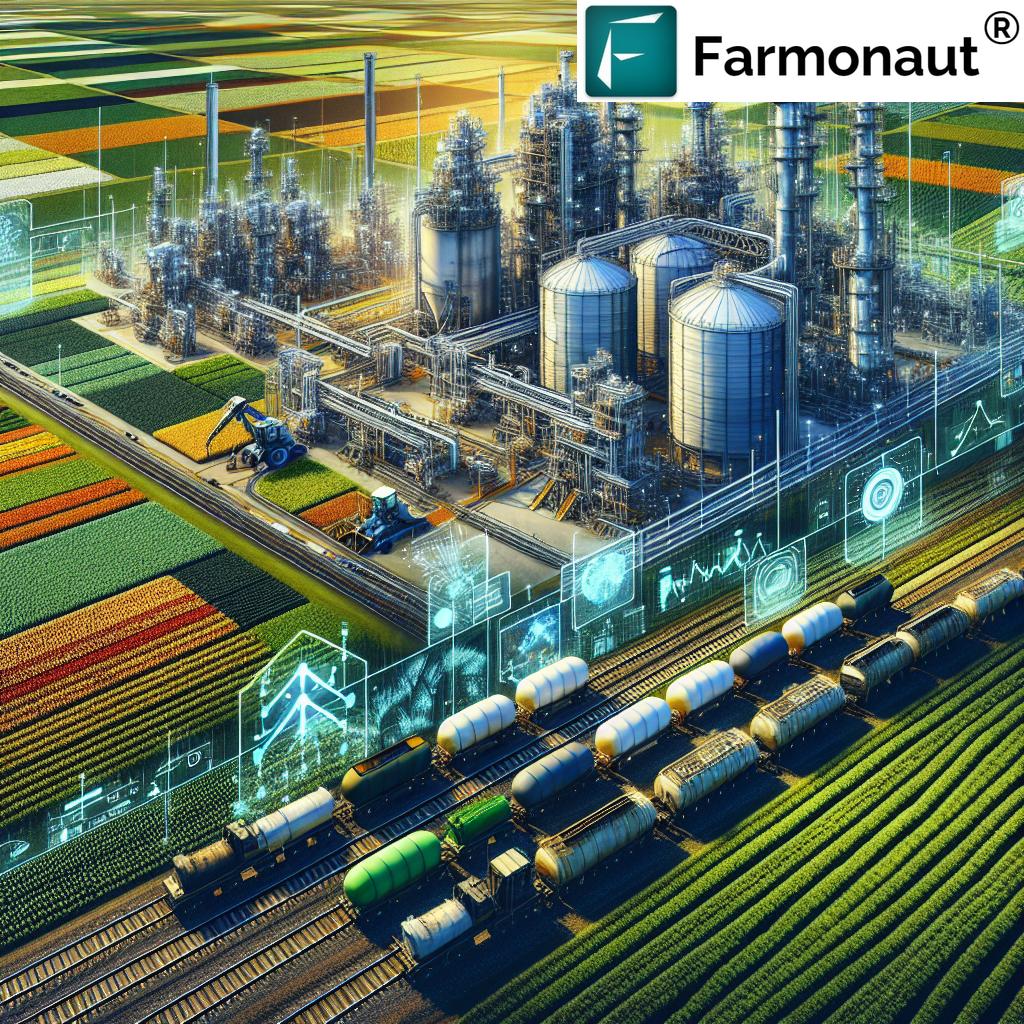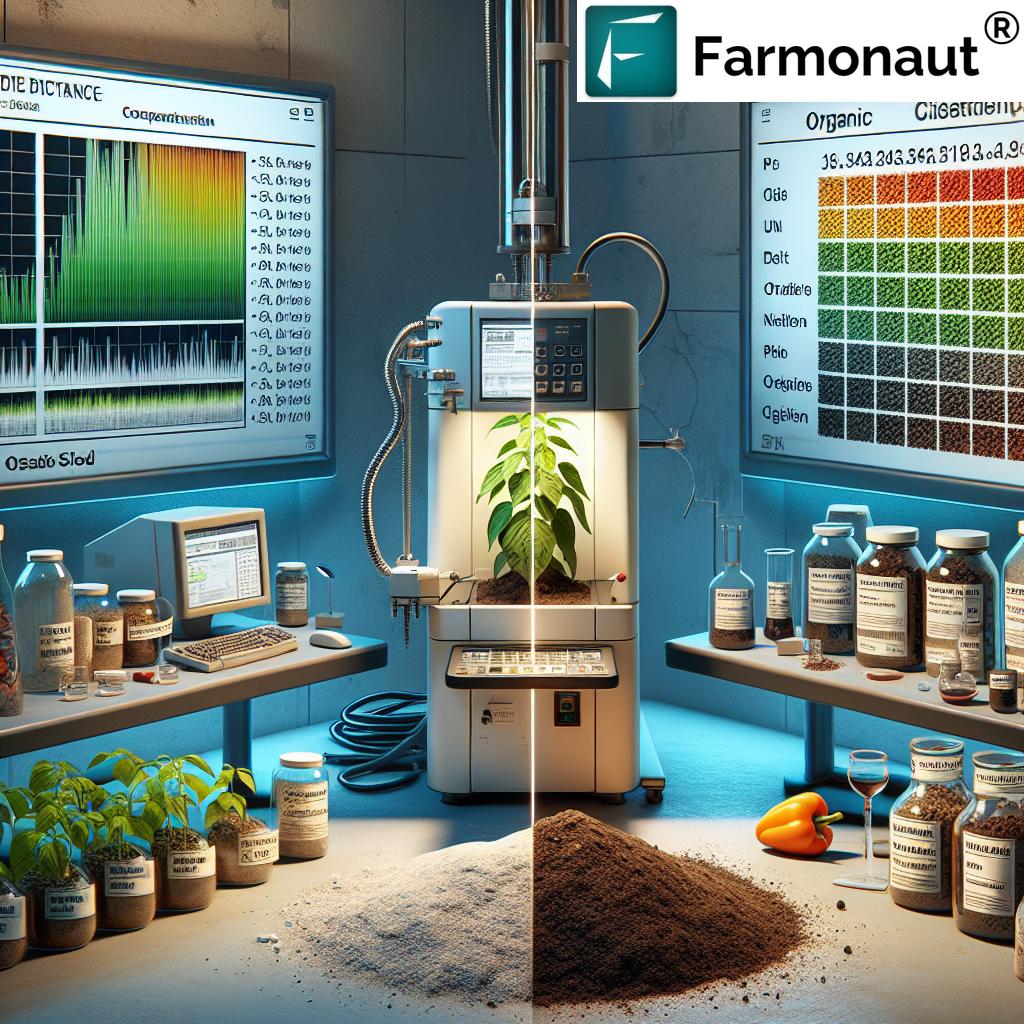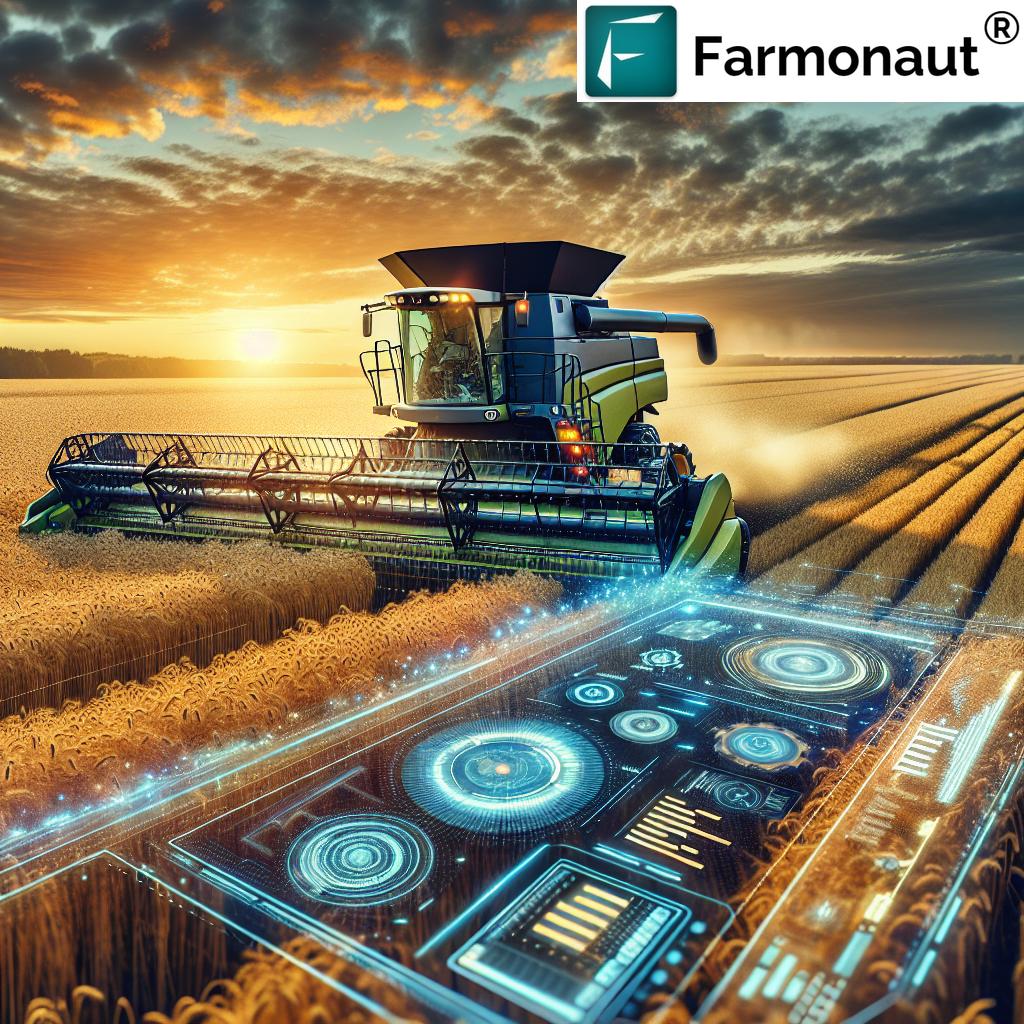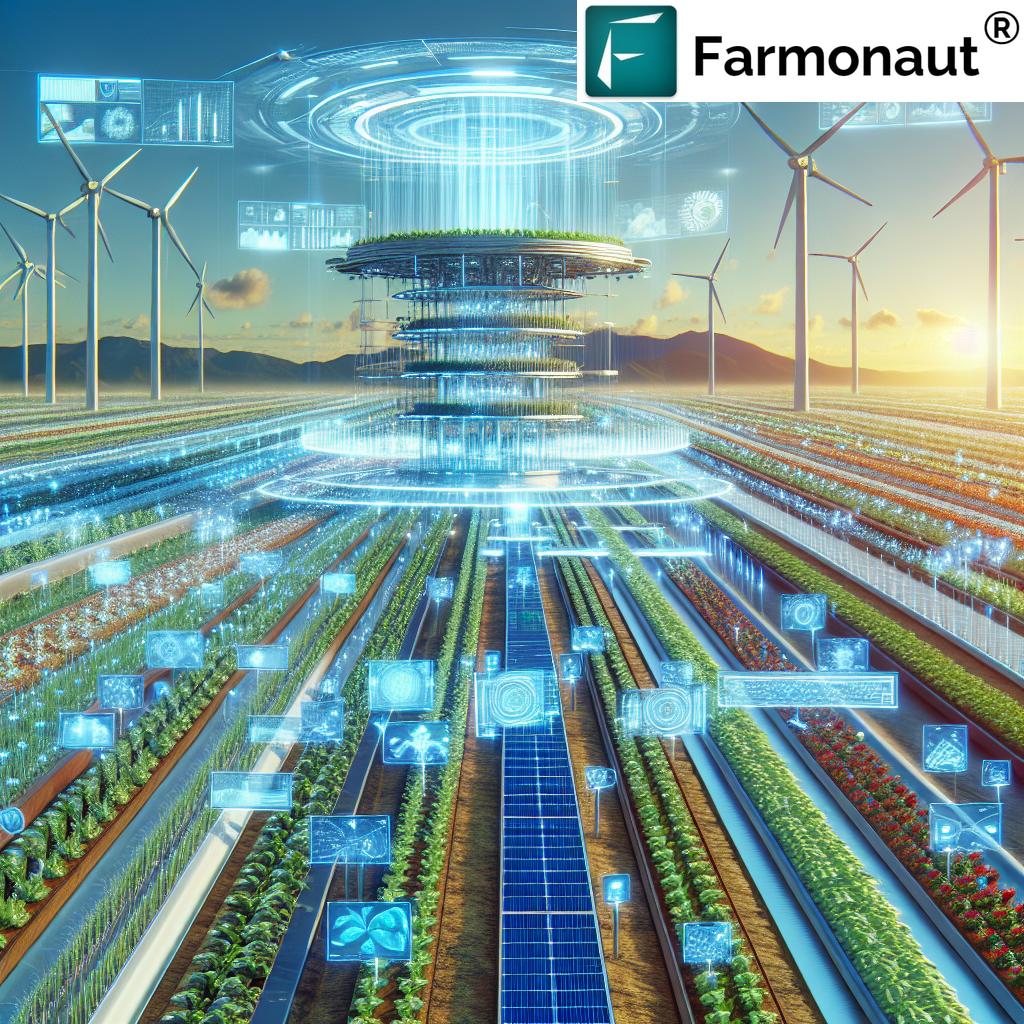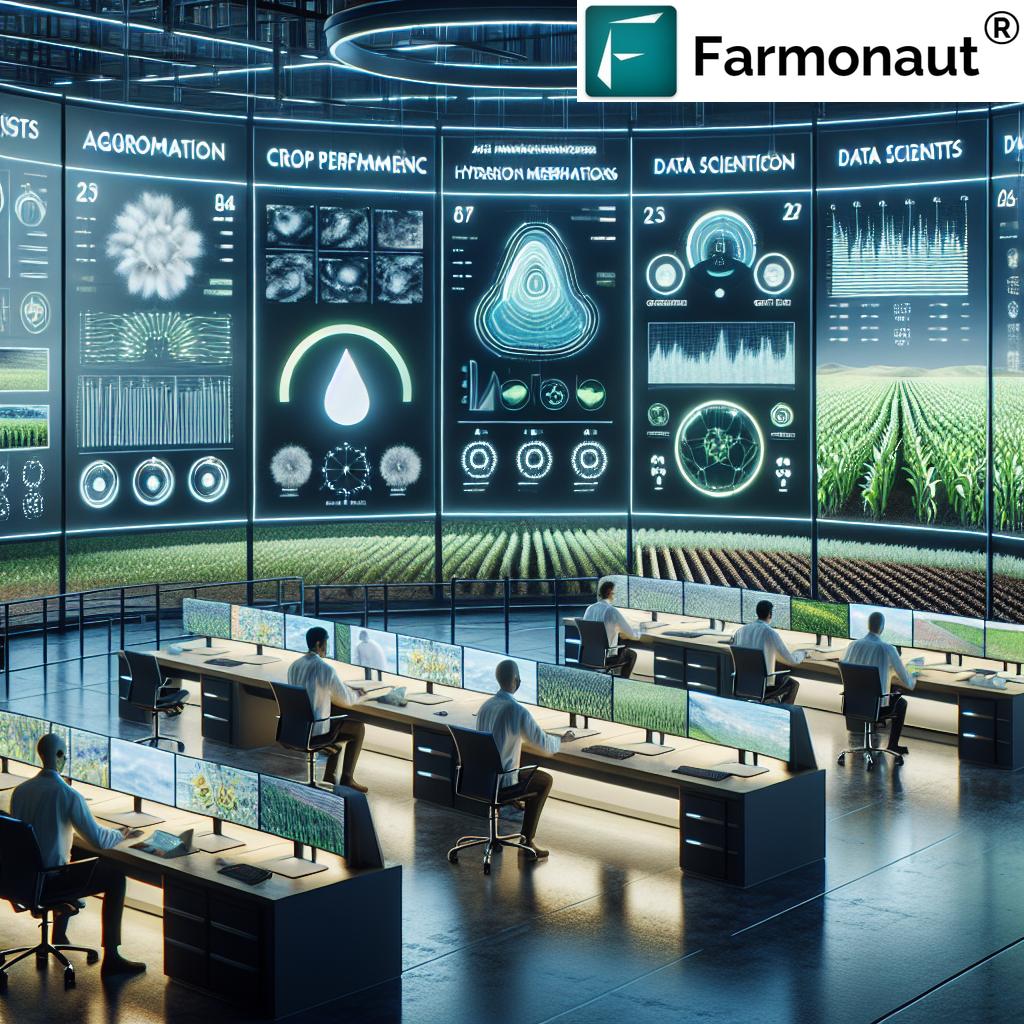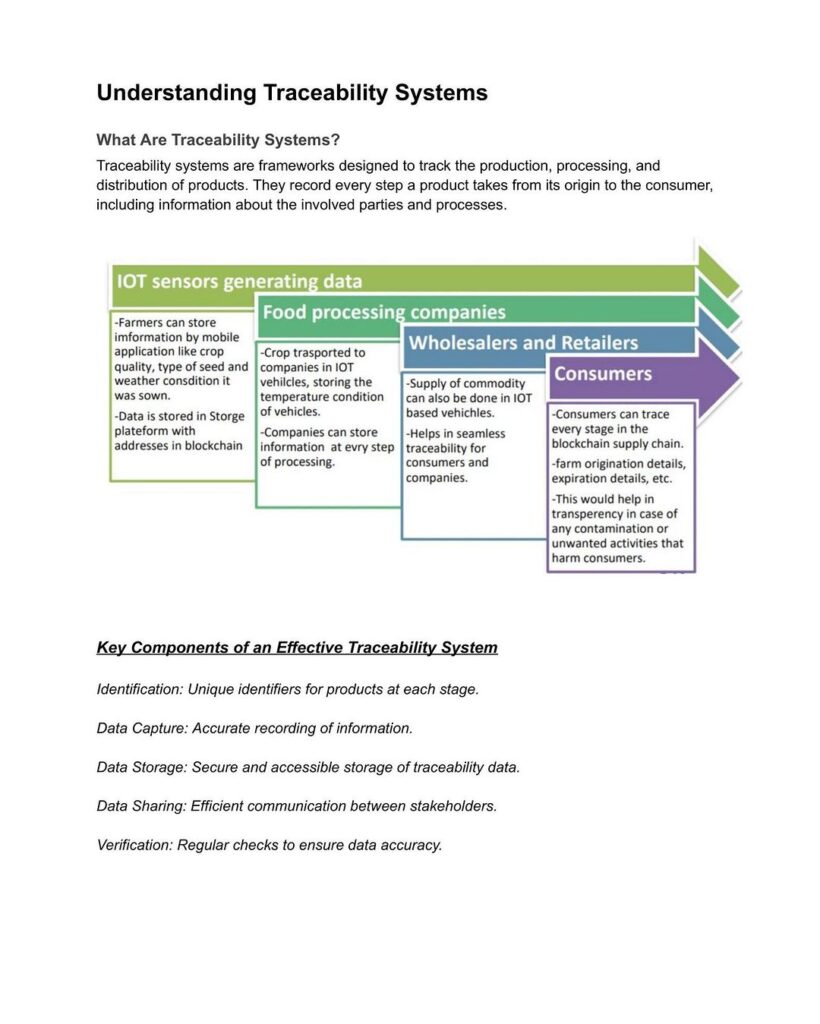Crop Monitoring Secrets: 7 Tech Hacks for Huge Yields
Table of Contents
- Introduction
- The Importance of Crop Monitoring in Modern Agriculture
- Overview: 7 Tech Hacks for Crop Monitoring
- 1. Satellite Crop Monitoring
- 2. Drone Crop Monitoring
- 3. IoT Sensors for Real-time Crop Data
- 4. Artificial Intelligence & Machine Learning in Agriculture
- 5. Mobile Farm Management Tools
- 6. Remote Sensing Technologies
- 7. Blockchain & Traceability Solutions
- Technology Comparison Table
- Practical Applications of Crop Monitoring
- Key Challenges & Solutions in Crop Monitoring
- Future Trends in Crop Monitoring
- Why Choose Farmonaut?
- Frequently Asked Questions (FAQ)
- Conclusion
“Precision farming can increase crop yields by up to 20% using real-time satellite data and advanced analytics.”
Crop Monitoring: The Pulse of Modern Agriculture
Crop monitoring is emerging as the fundamental practice shaping the landscape of agriculture, farming, and forestry around the globe. We understand that to optimize growth, ensure crop health, and drive higher yields, a systematic approach anchored in data and advanced technologies is essential. Leveraging tools such as satellite crop monitoring, IoT sensors, real-time crop data analytics, and AI-driven precision farming solutions enables us to address challenges like resource management, yield optimization, and environmental sustainability proactively, efficiently, and affordably.
The Importance of Crop Monitoring in Modern Agriculture
As we navigate the complex world of modern agriculture, crop monitoring stands out as a powerful driver for progress. Let’s explore why this practice is indispensable for farmers, agribusinesses, and the future of global food security:
- Yield Optimization: Early identification of issues such as pests, diseases, or water stress allows for timely interventions, directly resulting in increased productivity and better yields.
- Resource Management: Precise application of irrigation, fertilizers, and pesticides means lower input costs, less waste, and more responsible management of valuable resources.
- Environmental Sustainability: By minimizing overuse of agricultural inputs, we protect the environment and contribute to more sustainable farming practices.
- Food Security: Efficient crop management ensures a steady supply of high-quality crops to meet the growing population’s needs.
At Farmonaut, we’re committed to enabling these benefits for farmers worldwide by providing actionable insights and real-time data through our innovative agriculture technology solutions.
Crop Monitoring Secrets: 7 Tech Hacks You Must Know
Modern farming is all about leveraging advancements. Here’s an overview of the 7 technology hacks revolutionizing crop monitoring:
- Satellite Crop Monitoring
- Drone Crop Monitoring
- IoT Sensors for Real-Time Crop Data
- Artificial Intelligence & Machine Learning
- Mobile Farm Management Tools
- Remote Sensing Technologies
- Blockchain & Traceability Solutions
Let’s dive into each of these crop monitoring innovations, uncovering how they drive higher yields, sustainability, and efficient operation for farmers everywhere.
1. Satellite Crop Monitoring: See Beyond the Naked Eye
Satellite crop monitoring is transforming the way we observe and analyze our fields. By capturing detailed imagery across vast agricultural areas, satellites deliver critical real-time data on vegetation health, soil moisture, and crop growth patterns—often without the need to physically visit farms.
- NDVI (Normalized Difference Vegetation Index): NDVI is a scientific measure used to analyze plant health by assessing the difference between near-infrared (healthy plants reflect more) and red light (plants absorb for photosynthesis). Through NDVI maps, we can identify stress areas, measure growth, and spot early detection of crop diseases or nutrient deficiencies.
- Soil Moisture Levels: Satellites can remotely measure moisture conditions in soil, ensuring irrigation scheduling is precise and effective.
- Historical Data for Decision-Making: By analyzing historical satellite data, we are able to predict trends in yield, forecast weather patterns, and make informed decisions for the future of farming.
Satellite technology eliminates guesswork, helping us optimize resource allocation, improve soil health analysis, and anticipate outbreaks of pests or diseases quickly.
Farmonaut provides affordable, subscription-based satellite crop monitoring accessible from Android, iOS, and Web browser apps, giving every farmer access to advanced insights without costly equipment investments.
Explore more about our Large-Scale Farm Management platform—featuring satellite-driven decisions for massive yields!
2. Drone Crop Monitoring: High-Resolution Precision
Drone crop monitoring is revolutionizing how we scout large areas and detect early issues at high resolution. Drones equipped with multispectral and RGB cameras capture detailed images from above, providing precise views of plant conditions, even detecting issues invisible to the naked eye:
- Disease & Pest Detection: Drones enable early identification of pests and crop diseases from symptoms such as leaf discoloration, abnormal growth patterns, or water stress.
- Irrigation and Fertilizer Planning: Image analysis helps us plan optimal irrigation and fertilizer application by mapping out soil moisture levels and nutrient deficiencies across different farm zones.
- Growth Monitoring & Yield Prediction: By monitoring crop health over time, drones assist in harvest timing and provide critical inputs for yield prediction.
With drone data, farmers can target treatments (e.g., precise pesticide spraying) exactly where needed—improving productivity, reducing input costs, and preventing overuse of chemicals.
Drones complement satellite monitoring by offering finer spatial resolution, which is ideal for precision diagnosis and small-plot management, making them a valuable asset in any set of precision farming solutions.
“Over 60% of farmers using tech-based crop monitoring report improved sustainability and resource efficiency.”
3. IoT Sensors: The Nerve System for Real-Time Crop Data
IoT sensors are ground-based devices installed throughout fields to continually monitor soil and atmospheric conditions, transforming raw signals into actionable insights:
- Soil Moisture & Nutrient Levels: Soil sensors measure moisture, temperature, and nutrient levels at different depths, ensuring plants always have optimal growing conditions.
- Microclimate Monitoring: By capturing weather parameters (e.g., humidity, temperature, rainfall), IoT devices support risk assessment and irrigation planning.
- Real-Time Alerts & Forecasts: Connected to cloud systems, these sensors push immediate alerts for pest outbreaks, drought risk, or disease-friendly environments, enabling rapid intervention.
IoT technology powers the foundation of Farmonaut’s API, providing seamless integration with mobile apps and analytics platforms. Developers and businesses can make use of our open API platform to deliver localized, real-time agri data at scale.
4. Artificial Intelligence & Machine Learning: Predictive Analytics in Agriculture
Artificial Intelligence (AI) and Machine Learning form the “brain” of next-generation crop monitoring—processing enormous quantities of data to deliver:
- Yield Prediction: AI algorithms ingest data from satellites, IoT sensors, and weather models to predict potential yield, assisting with resource planning and market decisions.
- Pest & Disease Outbreak Forecast: Machine learning models learn from patterns of previous outbreaks to enable early detection and recommend timely chemical, biological, or agronomic interventions.
- Optimum Resource Application: AI provides prescriptions for irrigation, fertilizer, and pesticide application that are customized to field conditions.
Farmonaut’s Jeevn AI advisory system takes this further by offering personalized farm strategies and weather forecasts, helping farmers overcome both day-to-day and strategic challenges.
Discover how predictive analytics and AI farming tools can transform your operations, from early disease detection to sustainable output maximization—all using our cloud-powered apps.
5. Mobile Farm Management Tools: Agriculture in Your Pocket
In the era of mobility, farm management tools bring the power of real-time crop data to our fingertips. These apps connect seamlessly with sensors, satellites, and AI platforms to deliver:
- Remote Farm Monitoring: Visualize fields, assess crop growth, and spot pest or disease outbreaks directly from your phone or tablet.
- Customized Alerts and Recommendations: Receive automated push notifications for irrigation, fertilization, or timely interventions.
- Data Access Anytime, Anywhere: Stay updated with weather forecasts, crop health indices, and management advice—even when miles away from your fields.
Farmonaut’s Android, iOS, and web applications are built to be intuitive, comprehensive, and up-to-date, ensuring every farmer has the intelligence necessary for effective farm management. Experience these benefits directly through our mobile and web applications—bridging the data gap for efficient agriculture.
6. Remote Sensing Technologies: Multidimensional Crop Observation
Beyond satellites and drones, advanced remote sensing delivers an extensive range of actionable data for crop monitoring:
- Spectral Imaging: Identifies subtle differences in plant health and growth stages by detecting various wavelengths reflected from crops.
- Thermal Imaging: Reveals hidden signs of water stress or drought impact, allowing for timely interventions.
- Lidar (Light Detection and Ranging): Provides high-resolution 3D maps of crop canopies and field topography, supporting precise field management.
Remote sensing complements other large-scale monitoring solutions, enabling us to make better-informed, data-backed decisions and optimize for yield, sustainability, and resource usage.
7. Blockchain & Traceability Solutions: Building Trust from Farm to Fork
Increasingly demanded by end customers and value chains, blockchain-based traceability is redefining secure food supply systems by connecting every step of agriculture and forestry with verifiable data:
- Transparency: Every action—seed sowing, crop protection, harvesting, and transportation—can be recorded and timestamped on an immutable ledger.
- Trust: Retailers, brands, and consumers gain confidence that food is produced, handled, and shipped according to specification—supporting claims about quality, sustainability, and origin.
- Fraud Prevention: The use of blockchain in product traceability means every product’s journey from farm to shelf is secure and transparent, minimizing the risk of counterfeiting and supply chain errors.
Farmonaut leads the way in implementing blockchain-backed agricultural traceability solutions—giving corporate clients, producers, and consumers the peace of mind to trust every link in the chain.
Technology Comparison Table: The 7 Top Crop Monitoring Hacks Side-by-Side
| Tech Hack/Tool Name | Key Functionality | Estimated Yield Increase (%) | Sustainability Impact | Real-Time Data Use | Estimated Cost Savings (%) |
|---|---|---|---|---|---|
| Satellite Crop Monitoring | Remote sensing for soil & crop health analysis, NDVI, moisture mapping | 10–20% | High | Yes | 20–25% |
| Drone Crop Monitoring | High-resolution imaging, early detection of crop diseases & pests | 8–15% | Medium | Yes | 10–20% |
| IoT Sensors | On-field sensing of moisture, nutrients, microclimate observation | 5–12% | High | Yes | 10–15% |
| AI & Machine Learning | Predictive analytics in agriculture, yield prediction, outbreak alerts | 15–25% | High | Yes | 15–25% |
| Mobile Farm Management Tools | Mobile, real-time crop monitoring, management recommendations | 5–10% | Medium | Yes | 10–15% |
| Remote Sensing | Spectral & thermal imaging, Lidar field mapping, stress detection | 8–15% | High | Yes | 10–20% |
| Blockchain & Traceability | Supply chain verification, product origin tracking | 3–7% | High | Yes | 5–10% |
Practical Applications of Crop Monitoring to Boost Yields
When advanced crop monitoring solutions are put into action, we see major improvements across farming practices:
- Pest and Disease Management: Early detection of crop diseases and pests provides us with the information necessary to treat only affected zones, minimizing chemical use and avoiding large-scale losses.
- Irrigation Planning: Soil moisture mapping from satellite and IoT data allows precise water planning, cutting waste and optimizing water use.
- Nutrient Management: With soil sensors and imagery analysis, we can deliver nutrients exactly where needed, avoiding expensive over-fertilization and environmental harm.
- Harvest Timing: Using data on crop maturity and weather forecasts, optimal harvest windows are identified, ensuring higher yield and better product quality.
- Yield Prediction: AI-driven models help us anticipate results and plan resource allocation or market strategies in advance.
- Climate Adaptation: Crop monitoring tools identify areas at risk from drought, frost, or heatwaves, guiding adjustments to farming practices and input use for resilience.
- Environmental Sustainability: All practices combined reduce the carbon footprint of agriculture, enabling farmers and agribusinesses to track and minimize their environmental impact.
Key Challenges and Solutions in Crop Monitoring
As beneficial as advanced crop monitoring technologies are, we recognize real challenges must be overcome to achieve widespread adoption:
- High Initial Costs: Adoption is sometimes slowed by expenses related to high-tech hardware. Farmonaut addresses this by offering affordable, subscription-based satellite services that minimize hardware needs.
- Data Management: While gathering large amounts of data is easy with today’s technology, farmers often need support interpreting and applying it. Farmonaut’s simple dashboards and AI-driven recommendations offer true actionable insights.
- Limited Connectivity: In remote areas, poor internet connectivity can be a challenge. Offline data capture, SMS/WhatsApp-based alerts, and low-data apps help us bridge the gap for all users.
- Skill Gaps: Farmonaut’s intuitive apps and user-friendly interfaces bring digital crop monitoring to all skill levels, while ongoing education promotes better tech adoption.
Additionally, Farmonaut assists banks and insurance providers with satellite-based crop verification, improving access to financing for farmers and lowering the risks for lenders.
Future Trends in Crop Monitoring and Precision Agriculture
The future of crop monitoring will be even smarter, more accessible, and more sustainable:
- AI-Driven Predictive Analytics: Machine learning will analyze weather, soil, and plant patterns to foresee problems and suggest timely interventions. This results in higher yields and reduced crop losses.
- Biodegradable Sensors: Innovations in eco-friendly sensors provide ongoing soil and crop health analysis then safely decompose without leaving a footprint.
- Space-Based Farming Insights: Satellites will continue to cover more ground, enabling governments and organizations to manage supply, security, and disaster response at regional and even national levels.
We believe precision agriculture will only accelerate, delivering data, insights, and security to meet the needs of a growing population and a planet striving for sustainability.
Why Choose Farmonaut for Crop Monitoring and Precision Farming?
Farmonaut stands at the forefront of agriculture technology—making precision farming solutions affordable, accessible, and impactful for farmers and agribusinesses of all sizes:
- Advanced Satellite Crop Monitoring: Farmonaut’s platform provides real-time crop health monitoring, NDVI-based vegetation status, and detailed soil moisture analysis directly to your device.
- AI-Driven Insights: The Jeevn AI advisory system delivers personalized crop management recommendations and robust weather forecasts, increasing productivity and reducing risk.
- Blockchain-Based Traceability: Enhance trust in your supply chain from planting to market. Ensure authenticity and accountability using blockchain solutions.
- Resource and Fleet Management: Optimize farm operations, reduce costs, ensure vehicle safety and usage through intelligent fleet management tools.
- Carbon Footprinting: Monitor and reduce your environmental impact with live carbon tracking—supporting sustainability goals and regulatory compliance.
- Accessibility and Scalability: From individual farmers to large agribusinesses and public sector agencies, Farmonaut’s flexible solutions serve users globally, scaling as your needs expand.
Ready to experience seamless crop monitoring and next-generation farm management? Start with Farmonaut’s Web and Mobile App or unlock data-driven integrations with our API services.
Flexible Farmonaut Subscription Plans
Explore our transparent, subscription-based pricing—designed to make advanced crop monitoring tools available to everyone.
Frequently Asked Questions (FAQ) – Crop Monitoring Secrets
What is crop monitoring and why does it matter?
Crop monitoring is the systematic observation, measurement, and data analysis of crops, soil, and agro-environmental conditions to optimize growth, health, and yield. It enables early identification of stressors and ensures resources are applied where they deliver maximum benefit, saving costs and improving sustainability!
How does satellite crop monitoring differ from drone crop monitoring?
Satellite crop monitoring covers large geographic regions, providing macro-level vegetation health and soil moisture analysis with regular updates. Drone crop monitoring is optimized for smaller areas, delivering high-resolution imagery ideal for early pest/disease detection and targeted resource application.
How do IoT sensors and AI enhance farming decisions?
IoT sensors supply localized, real-time crop health and soil data, while AI interprets these complex data streams to deliver actionable insights—faster interventions, optimal irrigation/fertilization plans, and even yield predictions.
Can Farmonaut’s platform help my agribusiness with sustainability and traceability?
Absolutely! Farmonaut provides sustainability tracking via carbon footprinting tools and full end-to-end traceability using secure blockchain-enabled solutions.
What’s the easiest way for my team to start using advanced crop monitoring?
Simply sign up with Farmonaut! Download the mobile app, explore our web dashboard, or integrate your systems with Farmonaut’s API for seamless, real-time data access.
How important is ‘real-time’ data for effective crop management?
Real-time crop data empowers farmers to address challenges the moment they arise—preventing costly stress, lowering input overuse, and capturing yield potential before it’s lost.
Conclusion: Unlock Yield, Sustainability, and Security with Crop Monitoring
Crop monitoring sits at the heart of modern agriculture, farming, and forestry. By embracing the “7 Tech Hacks” outlined here—ranging from satellite imagery and drones to AI, blockchain, and more—we empower ourselves to unlock higher yields, reduce costs, and steward the land with precision for generations to come.
At Farmonaut, we guide our users to success with real-time tools, actionable insights, and seamless integration. Whether you manage a single farm or vast agribusiness operations, advanced monitoring means more control, fewer surprises, and a smarter, more sustainable future for all.
Ready to experience the benefits of crop monitoring and precision agriculture? Try Farmonaut’s apps or API toolkit—and watch your yields soar!


